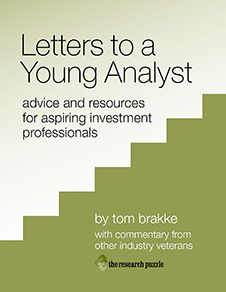
- Thursday, February 4th, 2010
- thinking about doing
-
Dominating the front page of the science section of the New York Times the other day was a large graphic that depicted the stages of a jump that is a specialty of Ryan St. Onge, who will be competing in freestyle aerials at the Winter Olympics. Specifically, it showed each element of “a triple-flip jump with a full twist in each of the second and third flips.” I got dizzy just looking at it.The New York Times | The online link does not have the graphic, but it does have a video. Even better.
The article — as you might expect in something called the “Science Times” — quickly started breaking down the physics of it all, and then examined how jumpers who do those types of maneuvers make the tiny adjustments while en route that will allow them to master those natural forces (and maybe even take home a gold).
What caught my eye was this paragraph:
But while not in the air, Mr. St. Onge devotes a lot of time to analyzing what he does. “I probably spend 80 percent of my time thinking about it, and 20 percent doing it,” he said.
Over the years, I’ve met investors of all stripes, from individuals to fiduciaries to big-name players, and they use strategies that range across every approach you could imagine. As far as I could see, almost none of them came anywhere close to St. Onge’s allocation of time. Part of it is the allure of the information flow: Flip on the screen and it starts washing over you and you start making decisions. Part of it is that the business has gotten to be one where transaction costs are nothing and positions are fleeting (and “ownership” does not extend to governance). Much of it is that following is an art form in the markets, and whether it’s the legendary gurus or the latest smart-sounding Tweetster that we use as a role model, we tend to copy first and think later. Plus, human nature is such that just doing it feels instinctively correct, and, in the hurly-burly of the modern world, we expect activity above all else.
For every investor and for every strategy, there is a sensible mix of doing versus thinking about doing, and the almost universal tendency is to shortchange the latter. Investment firms that battle each other for excess returns (and the client dollars that go with them) often are remarkably similar to each other in how they approach the investment equation. With little innovation in methods (exacerbated by the tendency to hug benchmarks), the quest for sustainable advantage becomes hiring the smartest people, since everyone is doing the same thing. It can sometimes work, but in the investment business, smart people are a dime a dozen.
Those that are unusual are the ones that can see a new way or a new angle, and those that, like St. Onge, spend tremendous amounts of time questioning, practicing, anticipating, adjusting, and exploring how they do what they do, before they do it. We are all forced to react when it’s time to perform. The nature and amount of our preparation will determine how well we do.
